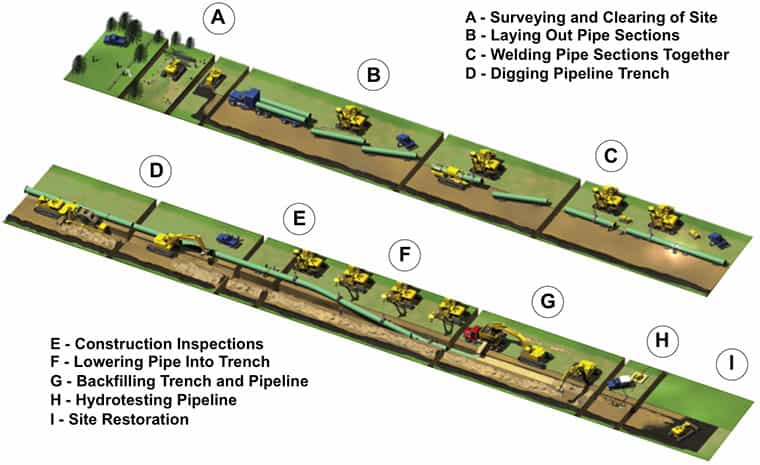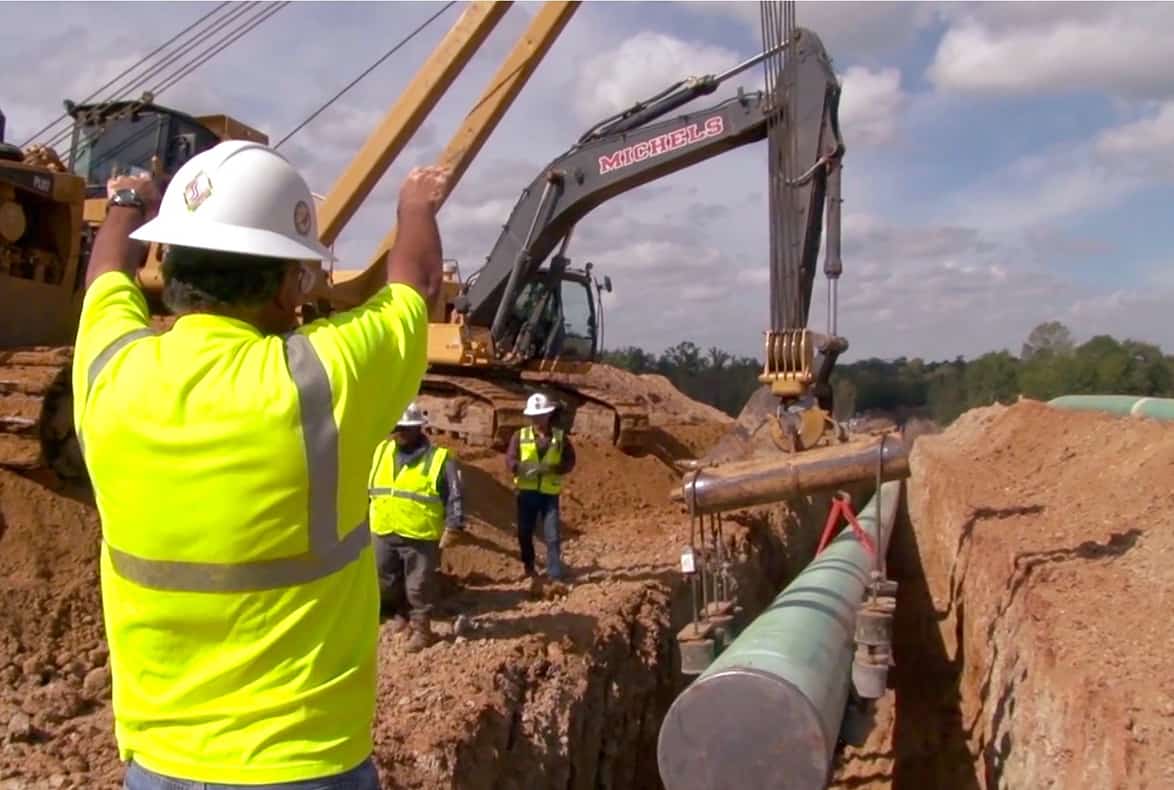Pipeline Construction
Pipelines are designed for their operating conditions, constructed with quality certified steel, assembled with qualified personnel and pass multiple inspections before operation.

Choosing A Pipeline's Route
Many factors go into the route a pipeline will travel. Listening to stakeholders, understanding issues, and balancing all of the factors is part of the selection process. Planners consider: Destination and length of pipeline' Construction issues Terrain and soil conditions Sensitive environmental features Densely populated areas Existing infrastructure to parallel or avoid Stakeholder concerns and preference
Quality Certified Materials & Techniques
Pipelines are designed to fit their operating use and conditions. The steel must be certified as meeting industry and federal government quality requirements for toughness and strength. Construction personnel, such as pipe welders, must have qualification certifications, which are checked as part of the pipeline inspection.

Pipeline Construction Steps
A host of federal and state regulations impose requirements on pipeline construction to ensure safe design, construction and pre-operation testing of all new pipelines. Pipeline builders must comply with rules on materials, specifications, and construction techniques. Everything from the type of steel used to how components are welded together must meet quality standards. After a new pipeline is constructed, inspected and any issues resolved, it must still undergo a hydrostatic pressure test, pumping water at high pressure, ensuring the pipeline is sound and ready for service.

Pipe Segments
Pipe is manufactured either by rolling hot rolled coil steel into a spiral and welding the sides of the sheet continuously to make the pipe or bending long sheets of steel lengthwise into a cylinder and then welding the seam the length of the pipe. Pipe segments typically 40’ long are transported to the construction site by train or truck and then laid out along the pipeline route.


Pipeline Assembly
Pipeline segments are welded together end to end to form the pipeline. Pipe welders must be qualified in accordance with industry standards incorporated into federal regulation. Weld types and procedures are also set by federal regulation. Welders must demonstrate their abilities in field tests before construction.
Construction Quality Inspection
Welds at the connection of pipe segments along the pipeline must be inspected for quality. An X-ray or ultrasonic scan ensures there are no defects in the connection. After passing inspection, weld joints receive the same anti-corrosion protective coating as the pipe body received at the pipe mill.


Pre-Operations Testing
After inspection, the pipeline is then lowered into the ground. An assembled pipeline must still undergo pre-operational testing before it is allowed to go into service. Operators pump water into the pipeline and hold it at high pressure to demonstrate there are no leaks in the pipe or its weld joints. Any construction issues are repaired before the pipe is operational.
Post-Construction Remediation
After the pipeline is assembled, laid in its trench, inspected and tested, the pipeline is covered and topsoil replaced. In agricultural areas, land over a pipe can return to normal farming.
